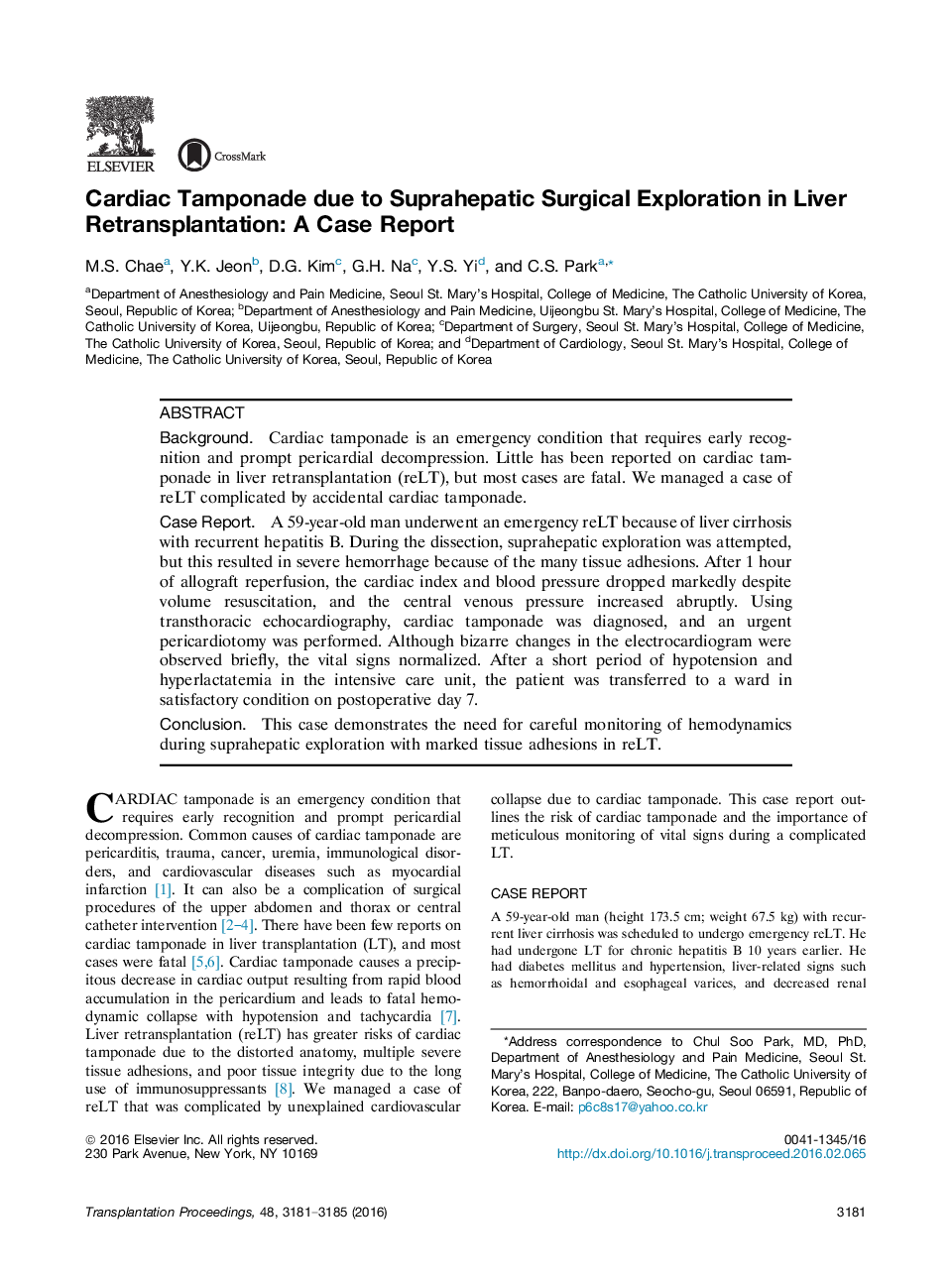| Article ID | Journal | Published Year | Pages | File Type |
|---|---|---|---|---|
| 5729062 | Transplantation Proceedings | 2016 | 5 Pages |
â¢In liver retransplantation, severe suprahepatic tissue adhesions and hepatic coagulopathy are important risk factors for cardiac tamponade.â¢The underlying splanchnic vasodilatation in liver cirrhosis could mask the compensatory changes in systemic vascular resistance during cardiac tamponade.â¢Close monitoring of hemodynamics and prompt decompression are essential to prevent a fatal outcome in cardiac tamponade.
BackgroundCardiac tamponade is an emergency condition that requires early recognition and prompt pericardial decompression. Little has been reported on cardiac tamponade in liver retransplantation (reLT), but most cases are fatal. We managed a case of reLT complicated by accidental cardiac tamponade.Case ReportA 59-year-old man underwent an emergency reLT because of liver cirrhosis with recurrent hepatitis B. During the dissection, suprahepatic exploration was attempted, but this resulted in severe hemorrhage because of the many tissue adhesions. After 1 hour of allograft reperfusion, the cardiac index and blood pressure dropped markedly despite volume resuscitation, and the central venous pressure increased abruptly. Using transthoracic echocardiography, cardiac tamponade was diagnosed, and an urgent pericardiotomy was performed. Although bizarre changes in the electrocardiogram were observed briefly, the vital signs normalized. After a short period of hypotension and hyperlactatemia in the intensive care unit, the patient was transferred to a ward in satisfactory condition on postoperative day 7.ConclusionThis case demonstrates the need for careful monitoring of hemodynamics during suprahepatic exploration with marked tissue adhesions in reLT.
